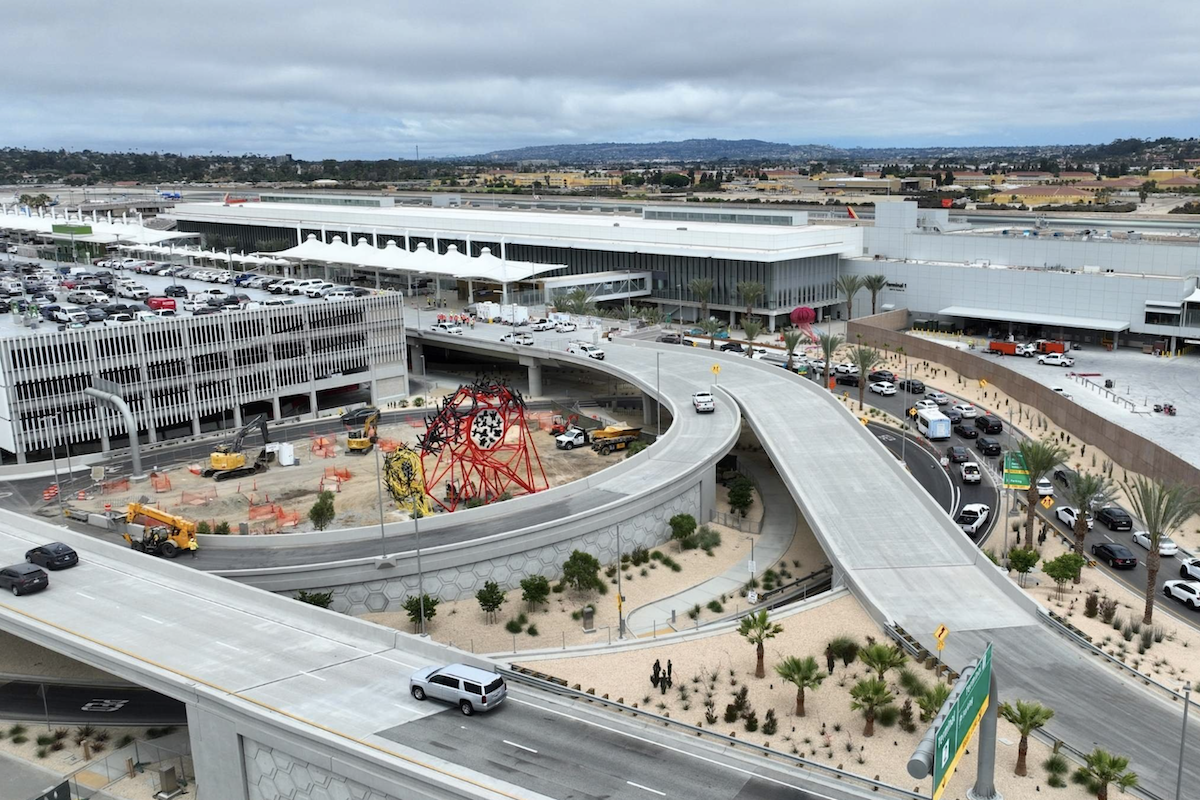The average daily traffic for the intersection where the two highways meet was 16,500 vehicles in 2021 and is projected to reach 22,500 vehicles in 2041. Each highway has two 12-foot lanes – one in each direction. The intersection was overwhelmed, and ARDOT determined they needed significant upgrades to service the traffic demands.
To improve traffic flow and increase capacity, ARDOT is adding one lane in each direction of Highway 270 across a 1.5-mile stretch, plus a center lane for a majority of the project. Highway 227 is also being widened and includes a dual left turn lane at the Highway 270/Highway 227 intersection. This intersection is being realigned and will utilize the latest ARDOT technology for traffic signalization.
The project is also expanding the walkability and alternative transportation routes in the region. The team is installing dedicated bike lanes on both highways on the east and west sides. With the installation of a buffered sidewalk, that is ADA-friendly, pedestrians will enjoy increased mobility in the area.
To do this, the team built the three lanes off to one side. “We’ve built the new lanes in stages to maintain traffic in its current condition as best we could,” Guthrie says. Besides building the new lanes, the current lanes are being repaved.

| Your local Gomaco dealer |
|---|
| Terry Equipment |
The re-alignment and widening of the intersection required significant right-of-way access and impacted local businesses. ARDOT worked to limit these impacts to a single quadrant of the intersection, so other businesses in adjacent quadrants could remain open with few impacts.
Among the businesses in the area are mom-and-pop shops and chain restaurants. “ARDOT goes out of its way to minimize inconvenience during construction,” says Tom Fisher, an Alternative Project Delivery Administer for ARDOT who was involved in procurement and as a liaison between the Department and Guthrie.
An example of their commitment is the team did all they could to ensure construction didn’t sever business access. If access was severed, the team tried to complete it in one day. Guthrie notes most businesses in the area have more than one exit and entrance, so they didn’t impact both. One business, however, did have only one access area. The business was closed on Monday, so the team worked in that location on Monday.
Based on the lakes in the area, one might think there would be a flat surface. However, there’s a rolling terrain around the project area. Guthrie notes a couple of cut sections were significant as the team aimed to make the highway straight and flat. “In some sections we had a big cut on one side of the project and fill 5 to 6 feet on the other,” says Guthrie.
The team also put in multiple retaining walls to limit impacts, including one that's over 20 feet tall. They had to cut 25 feet through rock to install the wall. According to Fisher, the tall retaining wall was installed since it allowed the state to acquire less right-of-way.
Construction began in September 2021 and the project was scheduled to finish in January 2024. However, the current estimated completion date is July 2023 – six months ahead of schedule. The contractor bid 825 days for the project and will receive an incentive for finishing early.
“The contractor has committed to executing the project swiftly,” Guthrie says. “They’ve had multiple crews working at different locations simultaneously.” He adds that the project's complexity (a large amount of utility relocation, realignment, retaining walls, etc.) may have encouraged contractors to take a conservative approach to scheduling. Favorable weather during the summer months has also aided the construction process.
“While McGeorge is an earthwork contractor, they have subsidiaries that were able to handle other project elements,” says Fisher. “This allows McGeorge to self-perform and gives them more control over the critical path.”
Because the project is significantly ahead of schedule, ARDOT expanded the project limits over a mile towards the east to allow for a mill and fill asphalt project for additional improvements back to the Highway 270 Bypass.
Financing for the $20.5 million project has come entirely from the state and its Connecting Arkansas Program (CAP). This project is one of 31 CAP projects that were part of the $1.8 billion plan. Financing for CAP came via a half-cent sales tax that has been assessed since 2012 upon a voter-approved constitutional amendment. The program expires on July 1, 2023, and this is one of the final CAP projects.
As vacation goers head towards Hot Springs this season and in the future, they will enjoy improved access from the west. Tourists and locals alike will have safer alternate transportation options within the western portion of Hot Springs.








































































